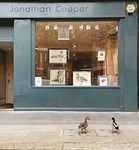An Asian art gallery with a branch in Hong Kong, had the following story.
One of their more important regular clients from the Far East was coming to London to visit the gallery.
She had made clear that she was interested in acquiring some further works on her visit. She was warmly greeted on arrival as indeed was always the case. She strolled around the gallery asking a few questions on some works, concerning history, provenance and any narrative that may have been available on them.
There were catalogues on display and she went through some of these, and there was a lot of casual chat about some of the works. After quite a long time the client bade farewell, and advised that she would be back in a few days for another visit.
She did indeed return after about a week and selected an unusually large number of works. She paid for some and the gallery was happy to give her credit for the remainder, given her longstanding relationship with them.
A few weeks later she paid everything outstanding, and there was no problem there. All works were duly shipped to the Far East.
This visit took place over 10 years ago but stuck in the gallery owner’s mind given the unexpected number of works this client purchased and the total value involved.
The client returned occasionally over the years, purchased the odd work, but never such a large number as on the occasion described.
Recently the client received a handwritten letter out of the blue.
It described all the purchases made in some detail on the occasion from 10 years ago and then commented on, for example, some of the historic auction prices that were now publicly available in relation to some of these works.
The bottom line was that the client was complaining that the gallery owners had been her ‘trusted advisers’ but that, on investigation, these works were purchased by her at what she alleged was a greatly inflated price and were currently worth very much less than that.
The purchaser had clearly muddled two roles. The gallery was, and always has been, a retail gallery. It has not and never has been an ‘art adviser’.
It is perfectly true that an art adviser may well have duties to his or her client to act in their best interests when advising on acquisitions.
Here it seemed that the client had become confused because of her close relationship with the gallery over a number of years.
So, a gallery with longstanding clients would do well to bear in mind at all times the need to make clear the dividing line: between the gallery, as vendors, and the customers, as purchasers.
With such clients there is a risk of the client perceiving the gallery’s role as something other than it is. An obvious danger there.
A diplomatic letter on behalf of the gallery together with equally diplomatic telephone calls resolved the problem, but it was a warning for the future.
Milton Silverman is senior commercial dispute resolution partner at Streathers Solicitors LLP, London.










